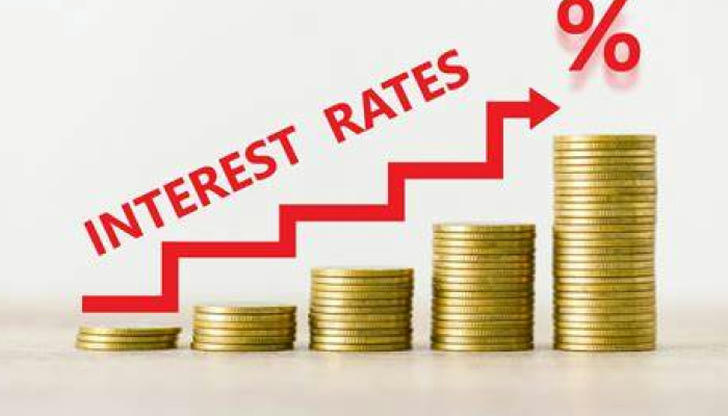Navigating Bank Loans: How To Get A Loan From A Bank Quickly
Bank loans are a cornerstone of modern finance, enabling individuals and businesses to achieve their financial goals. This guide provides a practical approach to understanding bank loans, including detailed steps for application, management, and repayment.

What is a Bank Loan?
The Basics
A bank loan is a formal agreement where a borrower receives a lump sum from a financial institution with the commitment to repay it over time, usually with interest. Banks assess applications based on the borrower’s creditworthiness, income stability, and ability to meet repayment obligations.
Types of Bank Loans
Personal Loans
Personal loans are unsecured funds intended for various personal expenses such as debt consolidation, medical bills, or education costs. They typically have higher interest rates due to the lack of collateral but offer flexibility in usage.
Mortgage Loans
Mortgage loans facilitate home purchases by allowing borrowers to pay off the property over an extended period, often 15 to 30 years. The property itself serves as collateral, reducing risk for the lender and lowering interest rates.
Auto Loans
Auto loans are designed specifically for vehicle purchases. Like mortgages, they are secured by the asset being purchased, leading to lower interest rates and structured repayment plans.
Business Loans
Business loans support entrepreneurs and established companies in expanding operations, acquiring inventory, or covering operational costs. These can be secured or unsecured, depending on the loan type and business profile.

Applying for a Bank Loan
Step-by-Step Application Process
1. Research and Prepare
Gather Documentation:
Collect necessary documents such as identification, proof of income (pay stubs, tax returns), and financial statements.
Understand Loan Options:
Research different types of loans to find one that best fits your needs and financial situation.
2. Submit Your Application
Complete the Form:
Fill out the loan application thoroughly, providing accurate information about yourself and the purpose of the loan.
Provide Supporting Documents:
Attach all required documentation to support your application.
3. Credit Check
** Check Your Credit Score:**
Obtain a copy of your credit report to ensure accuracy and address any issues before applying.
** Understand Impact:**
Be aware that a hard inquiry will temporarily lower your credit score slightly.
4. Approval Decision
Review Terms:
Once approved, carefully review the loan terms, including interest rate, repayment schedule, and any fees.
Negotiate if Necessary:
If the terms are not favorable, try negotiating better conditions or exploring other lenders.
5. Loan Disbursement
Direct Payment:
Ensure the loan amount is disbursed directly to you or to a third party, such as a seller or service provider.
Verify Receipt:
Confirm receipt of funds and check for any discrepancies.
Factors Influencing Loan Approval
Key Considerations
Credit Score:
Maintain a high credit score by paying bills on time and keeping credit utilization low.
Income Stability:
Provide evidence of consistent income through pay stubs and tax returns.
Debt-to-Income Ratio (DTI):
Aim for a DTI ratio below 36% to demonstrate manageable existing debts.
Collateral:
For secured loans, valuable assets pledged as collateral can enhance approval chances.
Employment History:
Highlight a stable employment record to increase reliability.

Benefits of Bank Loans
Advantages Explained
Predictable Payments:
Fixed monthly payments simplify budgeting and financial planning.
Competitive Rates:
Banks generally offer lower interest rates compared to alternative lenders.
Flexible Usage:
Funds can be used for a wide range of purposes, from purchasing assets to covering expenses.
Credit Building:
Timely repayments positively impact your credit history and score.
Risks Associated with Bank Loans
Potential Challenges
Interest Costs:
Understand the total cost of borrowing, including interest and fees.
Default Consequences:
Failure to repay can result in penalties, damage to credit score, and potential loss of collateral.
Financial Strain:
Overborrowing can strain your budget and affect overall financial health.

Managing Your Loan Effectively
Practical Tips
Borrow Wisely:
Only borrow what you need to minimize interest costs and reduce financial burden.
Understand Terms:
Before signing, ensure you fully understand the loan agreement, including interest rates, fees, and repayment schedules.
Plan Repayments:
Create a realistic budget that includes regular loan payments to avoid default.
Monitor Credit:
Regularly check your credit report to catch errors and maintain a healthy score.
Seek Advice:
Consult with financial advisors or loan officers to make informed decisions about borrowing.

Implementing Successful Borrowing Practices
Detailed Steps
1. Set Clear Financial Goals
Define what you need the loan for and how it will help achieve your objectives.
2. Evaluate Multiple Lenders
Compare offers from several banks to find the best terms and rates.
3. Prepare Thoroughly
Gather all necessary documents and ensure your financial statements are up-to-date.
4. Negotiate Terms
Don’t hesitate to negotiate better terms, especially if you have a strong credit history.
5. Maintain Good Communication
Keep in touch with your lender throughout the process, updating them on any changes that might affect your application.
6. Stay Organized
Keep records of all communications, applications, and agreements for future reference.
7. Prioritize Repayments
Make loan repayments a top priority in your monthly budget to avoid falling behind.
8. Regularly Review Your Financial Situation
Periodically reassess your finances to ensure you are on track with your loan repayments and financial goals.
Conclusion:Maximizing Value Through Responsible Borrowing
In conclusion, bank loans provide essential financial support for achieving personal and business objectives. By understanding the types of loans available, following a meticulous application process, recognizing factors influencing approval, and adopting responsible borrowing practices, individuals and businesses can effectively leverage bank loans to enhance their financial stability and growth.
